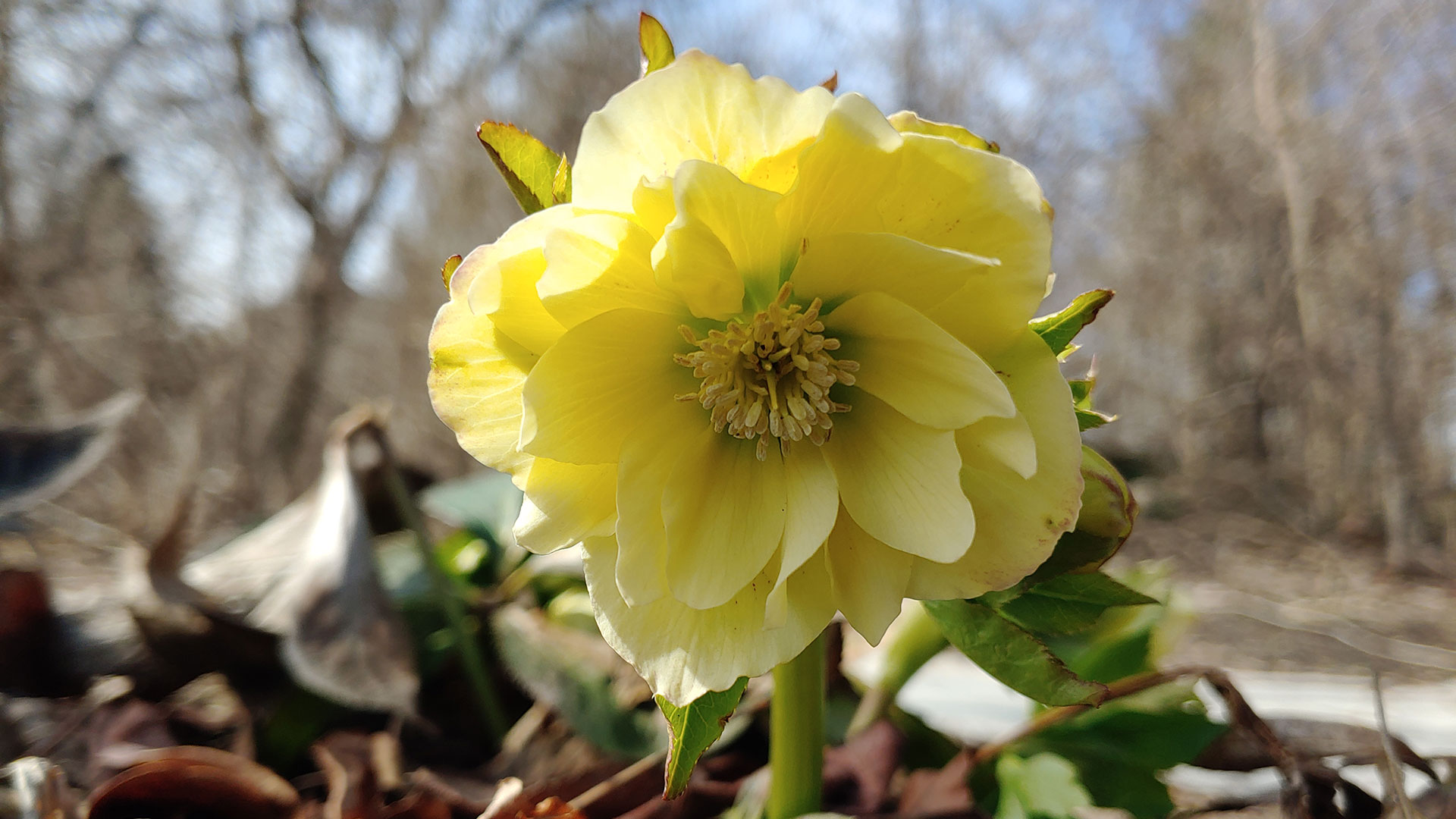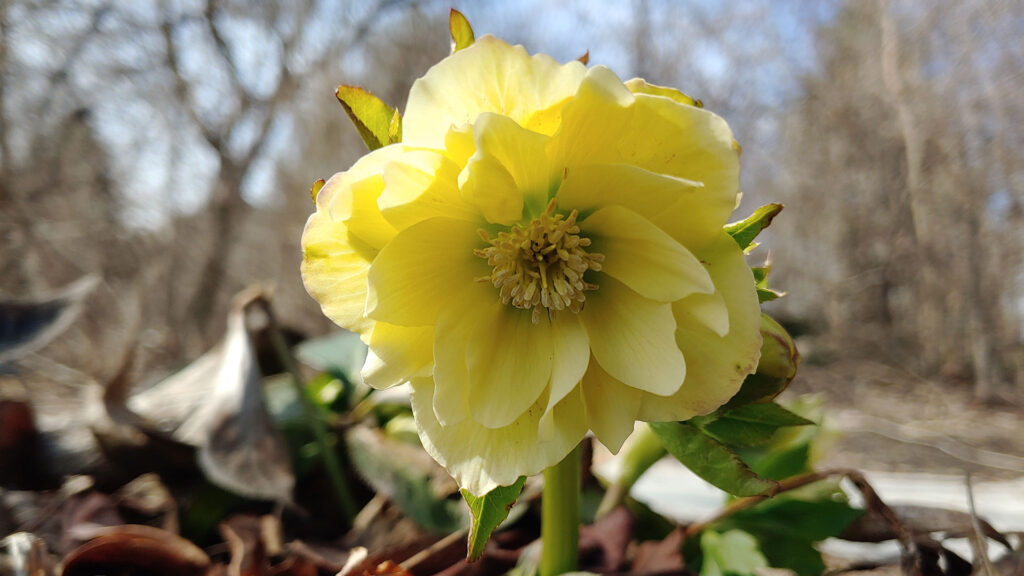Helleborus (hellebore) are not the first flowers to open as the growing season swells, but they leave a lasting impression. An observant gardener crawling amongst the plants at the beginning of winter will see the flower buds ready and waiting. In colder climes, the buds will remain resting at the plant’s base suffering the cold, ice, and snow until the blooms begin to rise in March or April. In warmer climes, December may see hellebores shake off dormancy and shoot blooms before the New Year begins.
No matter which part of the world they are in hellebores wait patiently, biding their time, lying in wait until just the right moment to make their upward thrust through all the dormant plant debris. The beautiful nodding heads shyly, yet firmly, own their tough splendor. They will put on a bit of a show for anyone enough in the know to watch. After the initial tentative blooms raise their heads, the plant gathers steam and shoots up more stems, more flowers, and more leaves as the days progress. In full bloom, the flowers will last longer than many other perennials and run the gamut in form and color – single or double rows, ruffled or smooth edges, colors solid to picotee, white to yellow, pink to a purple so dark it is close to black. Hellebore blooms hold form and coloration for a few weeks until eventually they begin to fade, mellowing out to a variety of dull, green shades. Even though the green signifies the waning of full bloom, those lovely remnants provide additional interest for weeks and weeks. As the leaves fill in, the flower stems relinquish dominance, feeding the roots to store nutrients for next season’s show.
Gardeners can find species and cultivars within the world of Helleborus that will grow and thrive almost anywhere in Zones 3 through 9. From generic to unusual, it can be found. They do have a couple of conditions to make them happy: feed them well every year and plant them in well-drained soil. Partial to somewhat shady sites, hellebore tolerance for full sun exposure appears a bit better in northern climes especially when fed and watered properly. Although they are quite forgiving in many settings and situations that does not include wet feet. Just don’t go there. Drainage is important.
Although hellebores are difficult to kill, moving them knocks back development. If you must, do plant divisions in early spring by separating plantlets away from the main plant. Keep any exposed roots covered and moist. Plant as soon as possible to minimize root loss. Do expect to see a subsequent delay in flowering and a decline in plant mass when playing with hellebore root systems. The upside is they will forgive you eventually.
An easy-going player in the garden, hellebores work their way into your heart. Just give them a bit of room and board, and then do not worry about them. These patient, determined plants are workhorses made for dappled shade, for the edges of woodlands, and for garden spots with a need for welcoming, carefree foliage almost all year.

